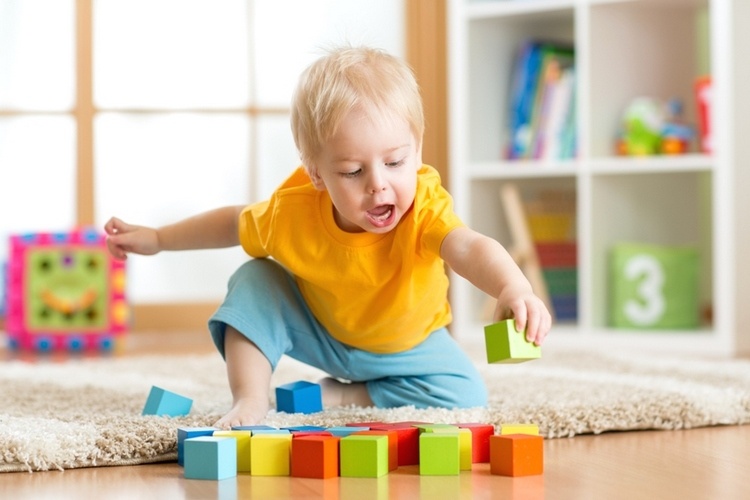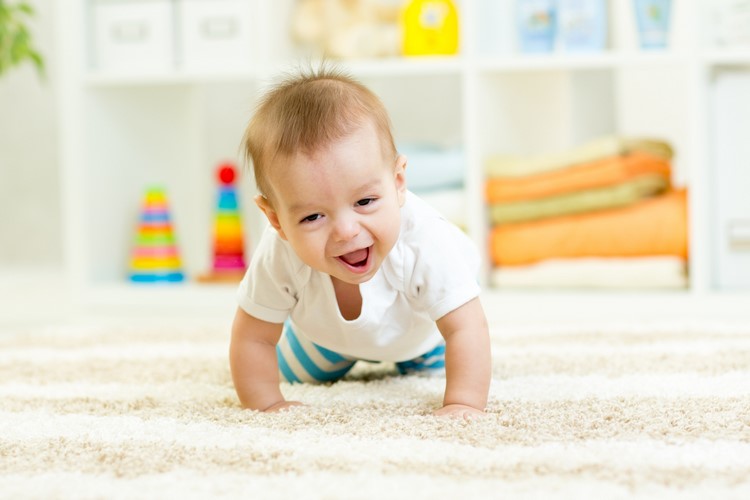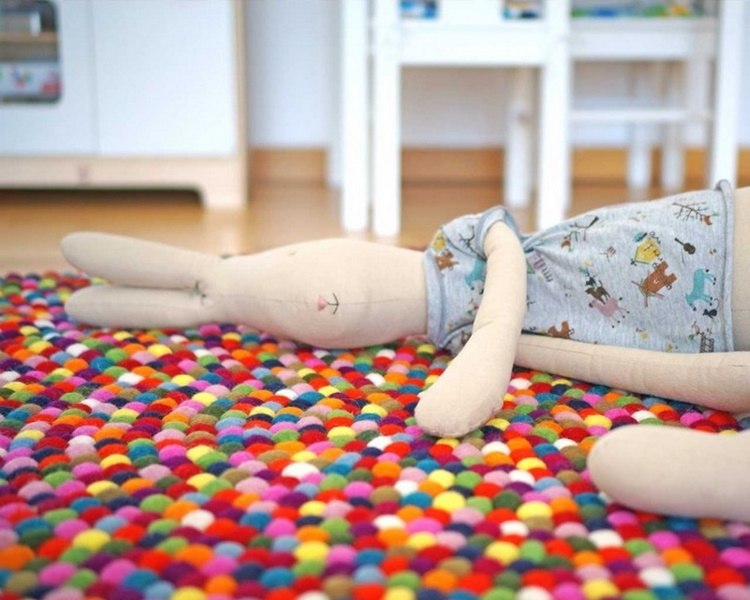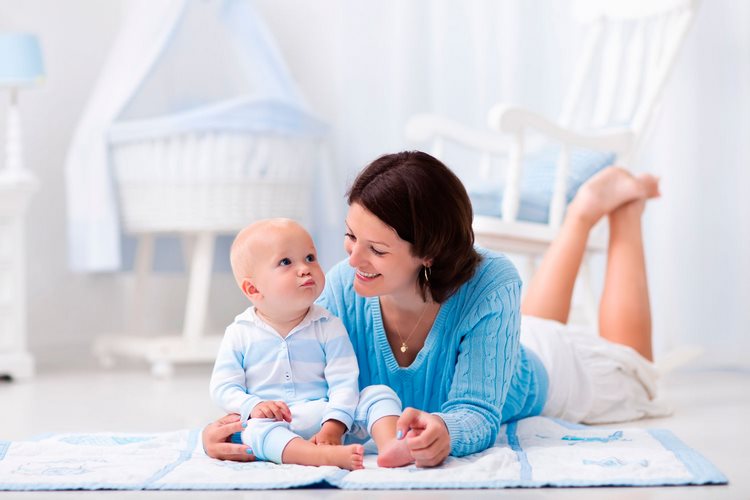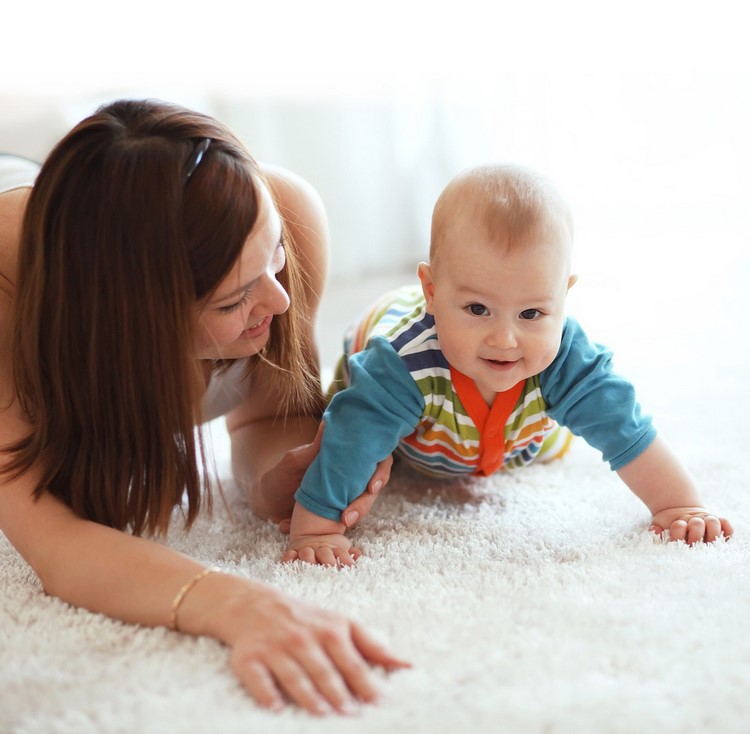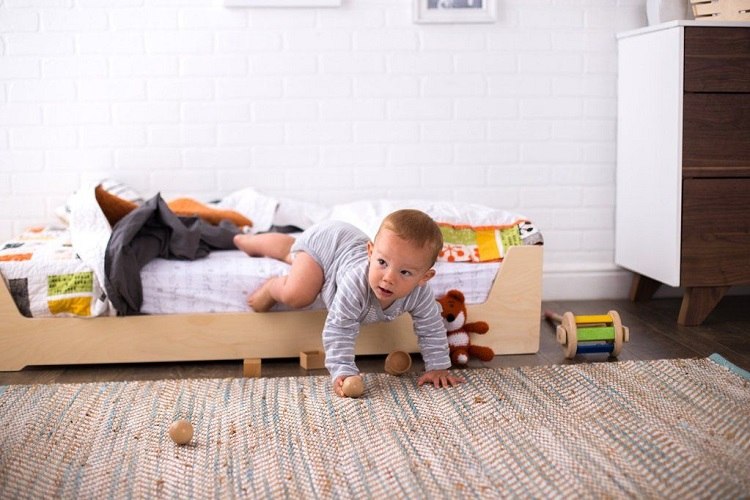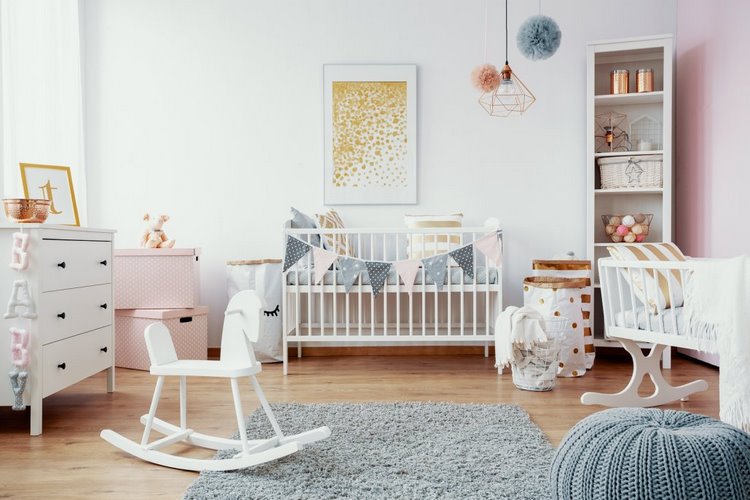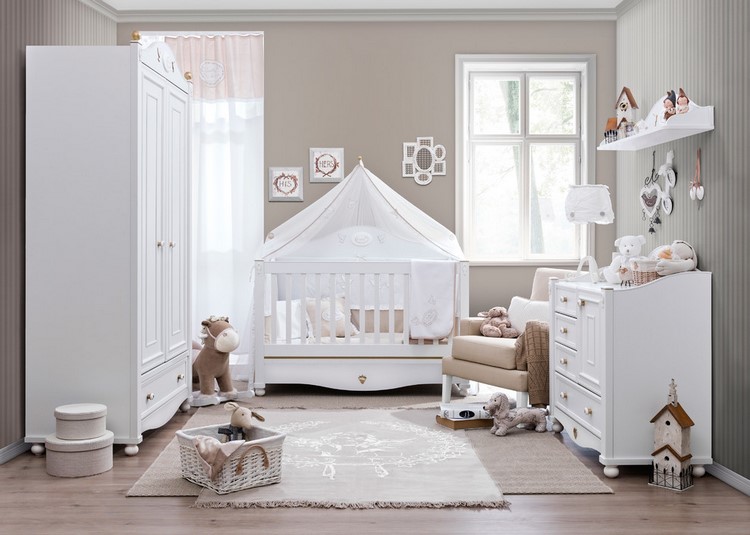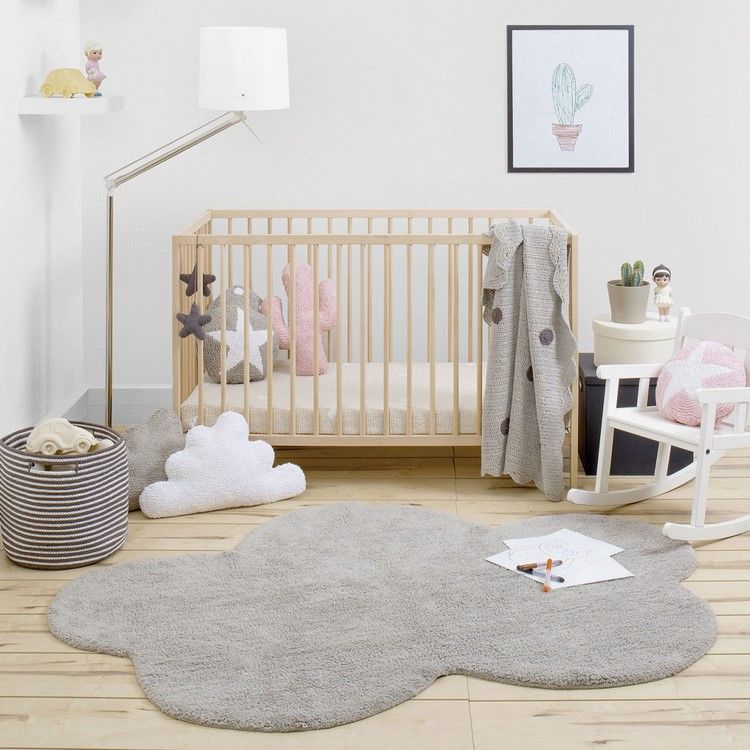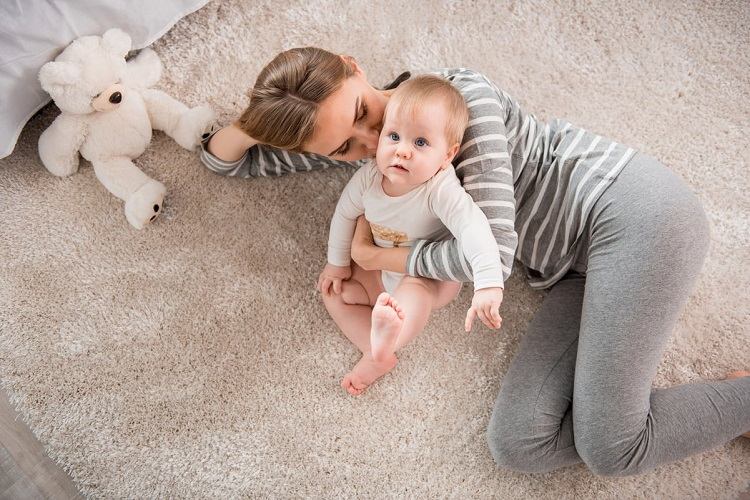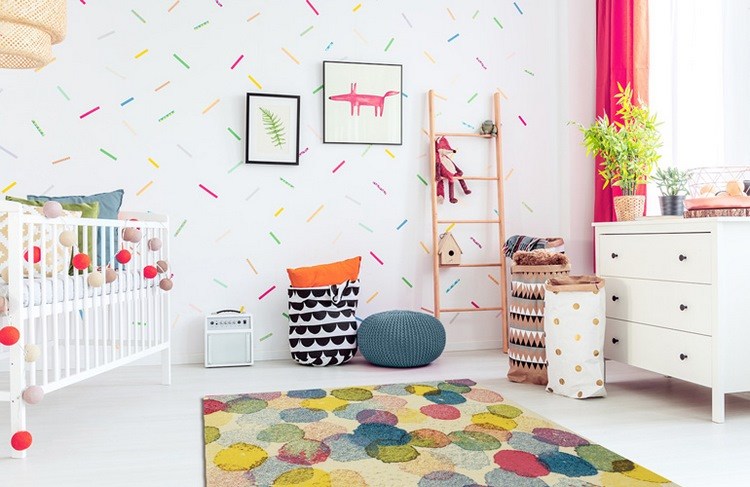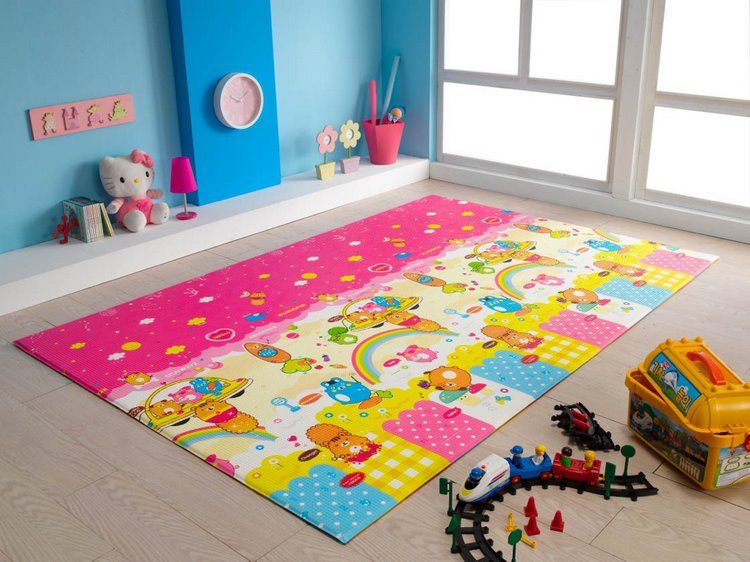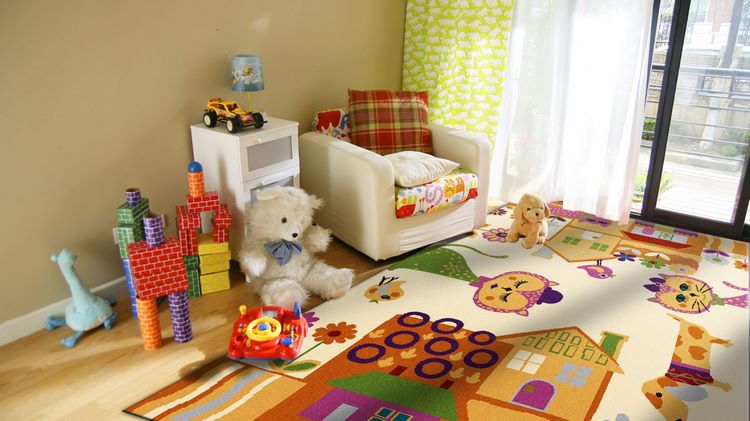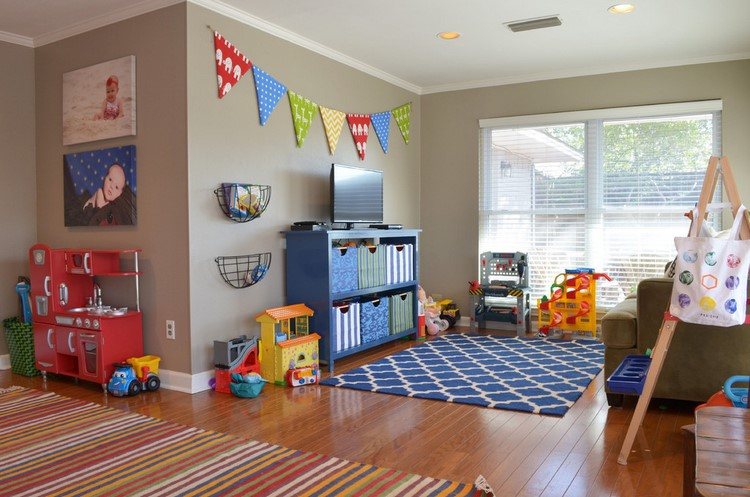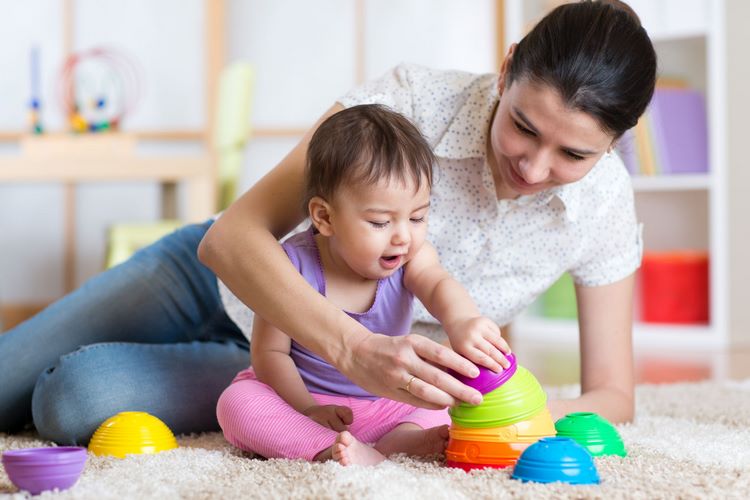Choosing a carpet for the nursery room is a task that requires attention. There are many factors to consider – the size of the room, the size and shape of the carpet, appropriate colors and design, etc. Today we want to focus your attention on the different materials, as this is just as important. When do you need to buy a carpet for the nursery room? It will be good if you get a carpet from the moment the child begins to learn to crawl. Choose a soft and warm rug which is safe for the child and will not bruise his knees.
Carpet for the nursery room – important requirements and considerations
Most manufacturers do not label their carpets as suitable for children but in their catalogs you can see the “nursery” section. And most often these models are designed with images and patterns for children. Of course, this does not mean that your choice is limited to only those carpets. When you are looking for a carpet for the nursery room you need to consider the following:
- material and pile height,
- size,
- age interests and temperament of the child,
- price category of carpet.
In this case, your choice expands significantly, and you will definitely find the best option.
On the other hand, it is difficult to deny that a carpet collects of dirt and dust. Therefore, when choosing it, you need to pay attention to the convenience of cleaning and hypoallergenic properties of the material. Easy cleaning and maintenance is perhaps the main requirement for the carpet in the nursery. The most successful choice here will be a rug with a soft, but not too thick and rather short pile, in which dirt and small toys parts will not hide. Get a bright base color carpet with a simple geometric pattern that will attract the baby’s attention.
Regardless of the child’s age, there are more requirements for children’s flooring than for a bedroom or living room, because children are in direct contact with the carpet. When choosing, consider the following parameters:
- Warm and practical – When small children start discovering the world, they play and move a lot and quite often something falls or spills on the floor. A carpet will last for a long time and not lose its appearance if it is made of high-quality and warm material which is easy to clean and has no smell.
- Softness and texture – Since babies and children spend a lot of time on the floor, make sure that the rug is pleasant to touch.
- Hypoallergenic – When choosing a carpet for the nursery room, pay attention materials which will not cause allergies.
- Design – The carpet should blend harmoniously into the interior of the room.
- The age of the child – The criteria for choosing a carpet for a baby and for teenager will be different.
- Price – Natural materials are more expensive than artificial. It is better not to save on quality, since the child’s comfort depends on it.
Carpet for the nursery room – review of materials and buyer’s guide
Children’s carpets are most often made from natural materials like wool, silk, cotton, plant materials or synthetic materials nylon (polyamide), polypropylene, polyester. Which one is better for the child?
Carpet for the nursery room from natural materials
Carpets made from natural materials have their pros and cons. Their advantages as a floor covering in the nursery include environmental friendliness, strength and durability, elastic pile. The main disadvantages are the accumulation of static electricity, the high cost and cleaning. These products do not tolerate water and can be deformed under its influence. This means that wet cleaning is not advisable. Rough brushes are also not suitable for the maintenance of natural carpets.
Wool carpets are top quality products. Wool has long been considered the most popular material for carpet manufacturing. The flexible and elastic fibers make the product extremely durable and wear-resistant, resistant to dirt and various dents. Wool gives excellent tactile sensations, increases soundproofing and gives warmth. Wool carpets do not fade, they are anti-static, and also have a high degree of fire safety. The material is soft, looks expensive and retains its original appearance for a long time. The major cons of wool carpets for the nursery room are that this material is able to accumulate static electricity. Wool is afraid of moths and damp and susceptible to mold. It is recommended to dry clean woolen carpets, they should not be washed frequently with water. Choosing wool products should be with caution, if the baby is prone to allergies. Last but not least, these carpets have a high price tag and are much more expensive than synthetic counterparts.
Cotton is a good option at an affordable price. Unlike wool, cotton carpets do not cause allergies, they are completely safe and environmentally friendly. The texture is pleasant to the touch and does not cause irritation. With regular vacuum cleaning, the rug retains its presentable appearance for a long time. Cotton carpets retain their shape well, but their main disadvantage is a very strong absorption of moisture which means that they are not resistant to stains so this is not the best choice for the room of babies and toddlers. Cotton reacts poorly to chemical cleaning reagents. Cotton rugs fade faster in the sun. The service life of a cotton carpet is relatively short.
Silk carpets are rarely used in the nursery due to the high cost of such products. As a rule, they are designed for decorating living rooms, bedrooms, etc. However, if you can afford it, you need to know the pros and cons. Silk carpets are very beautiful, light, elegant and refined. Silk is a luxurious material and carpets are soft and smooth to the touch, do not attract dust and have a noble shine. In addition, they retain their bright colors and shape for a long time. However, their resistance to washing and wear is very low, which makes them unsuitable for a nursery room.
Sisal, jute and other “exotic” materials – Despite the fact that these materials are also environmentally friendly, they are not suitable for babies and small children. On the first place, they absorb moisture and in addition, their surface is too hard which makes them inconvenient to crawl and play.
Pros and cons of synthetic carpets for the nursery room
Synthetic carpets come in a wide variety of materials- acrylic, polypropylene, nylon, etc. They are treated with antistatic and water-repellent impregnation during the production process, have low cost, a huge selection of colors and ornaments, and are also very easy to clean. The disadvantages include low environmental friendliness, poor elasticity and low heat resistance. Let’s look at some of the popular materials for synthetic carpets.
Polypropylene carpets are often bought for nursery rooms. The bright designs, practicality and low cost explain the popularity of the product. Polypropylene is an artificial material and is often used for the production of synthetic rugs. These rugs are anti-allergic, they do not attract dust and are resistant to mold and mildew. The pile of high-quality carpet from this material is similar to wool. An important property of these products is their moisture resistance. They are easy to maintain, do not deform and do not lose the brightness of colors. On the downside we have to point out that polypropylene is not environmentally friendly. It begins to melt if heated above 150°C. Under heavy furniture polypropylene rugs are deformed. This material is a poor insulator against cold.
Viscose, also known as rayon, is semi-synthetic fiber. It is artificially produced from recycled wood pulp and additives. Viscose carpets are soft and pleasant to the touch and will not irritate the skin of a child. The rugs are lightweight and practical as well as wear resistant and easily bear heavy traffic. They come in a wide range of colors and do not fade in the sun. Viscose is afraid of fire and high temperatures so it cannot be used near heating appliances. This material is relatively slippery and must be firmly fixed to the floor. Under the influence of moisture, viscose fibers lose their appearance and the pile changes shape.
Nylon or polyamide is a synthetic material. Polyamide fiber is quite dense and wear-resistant. Polyamide carpets perfectly retain the original texture and color. These rugs are characterized with durability and
Polyurethane foam was invented recently and quickly gained popularity among families with children. The uniqueness of this material is that unlike other artificial carpets, it retains heat. It is lightweight and with good sound insulating properties. Polyurethane foam mats are hypoallergenic, harmless, hygienic, not afraid of moisture. The mats do not absorb pollution and microbes and repel odors. As a drawback one can point out the limited color choices.

